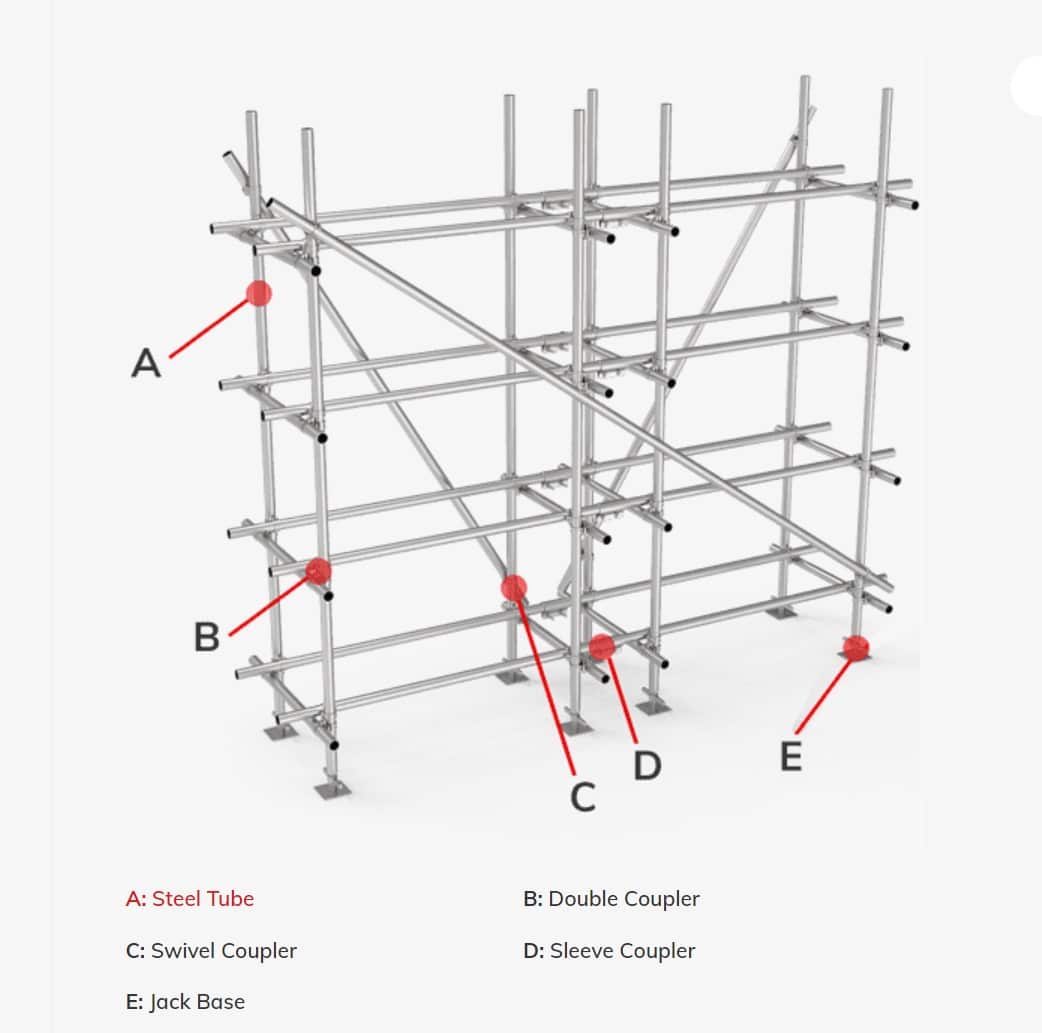Finding the Benefits of Scaffolding for Service Providers and Building Workers
The execution of scaffolding in building projects functions as an essential component for boosting functional performance and safety and security. By supplying steady access to raised workplace, scaffolding not only reduces the threat of falls but also improves workflows for numerous trades associated with a job. Its versatile nature permits for application throughout a broad range of construction situations, possibly leading to significant cost financial savings. The complete extent of scaffolding's advantages prolongs past mere functionality and safety-- there are much deeper effects that necessitate further exploration.

Boosted Employee Safety
Improved employee security is a vital concern in the building sector, specifically when it involves the usage of scaffolding. Appropriately made and set up scaffolding systems offer important assistance for employees running at elevations, dramatically reducing the threat of falls, which are among the leading reasons for deaths in building and construction.
Scaffolding improves security through its architectural stability and style features that enable steady work systems. Top quality scaffolding products, such as steel or light weight aluminum, offer sturdiness and stamina, making certain that they can withstand the weight and motion of products and workers. Security measures such as guardrails, toe boards, and gain access to ladders are essential components that stop injuries and mishaps.
Normal inspections and maintenance of scaffolding are crucial to support safety and security requirements. Spending in appropriate scaffolding options is not merely a governing requirement; it is a basic aspect of advertising a secure functioning environment in the building sector.
Improved Access
Accessibility in the building market is important for promoting effectiveness and productivity on task websites. Scaffolding gives a versatile solution that considerably enhances access for specialists and building and construction employees. By providing stable systems at numerous elevations, scaffolding allows employees to get to raised areas securely and efficiently, reducing the demand for cumbersome ladders or unpleasant placements that can hinder progression.
The layout of scaffolding systems permits very easy activity of workers, devices, and materials, simplifying operations and reducing hold-ups. With correct scaffolding in position, workers can team up extra successfully, as multiple team participants can run at the same time in a confined space without compromising safety or ease of access. This flexibility is especially valuable in complex construction tasks that call for constant modifications in elevation or setting.
Furthermore, scaffolding can be personalized to fit certain project requirements, making sure that all locations are obtainable despite the building's architecture. By boosting availability, scaffolding not only boosts the work setting yet likewise adds to a much more organized website, thus advertising a culture of effectiveness and safety. In summary, improved access via scaffolding is a crucial factor in optimizing the performance of construction groups.
Enhanced Effectiveness
The execution of scaffolding not only enhances ease of access yet additionally plays a considerable duty in raising effectiveness on construction sites. By giving a safe and stable platform, scaffolding allows workers to perform jobs at height with better convenience and safety and security. This reduces the time invested moving materials and equipment, as whatever needed is within arm's reach. Employees can concentrate on their certain jobs without constant disturbances.
Additionally, scaffolding allows several professions to work concurrently, boosting collaboration and speeding up job timelines. For instance, while one team is mounting electrical systems, an additional can deal with plumbing or completing jobs on the very same level, minimizing downtime. The strategic layout of scaffolding additionally assists in quicker movement across the website, getting rid of the need for consistent elevation adjustments or excessive ladder use.

Cost-Effectiveness
While lots of may originally view scaffolding as an added expense, its implementation in fact adds to considerable cost-effectiveness on building and construction jobs. By helping with safer and more effective job environments, scaffolding minimizes the risks of injuries and crashes, which can cause expensive hold-ups and increased insurance coverage premiums.
Additionally, scaffolding enhances productivity by offering employees with immediate accessibility to numerous degrees of a framework. This accessibility not just increases the pace of building and construction but also lowers labor costs, as workers can finish scaffolding kits jobs a lot more quickly without the requirement for difficult ladders or lifts.
Additionally, the modular nature of scaffolding enables versatility in its usage across numerous tasks, bring about lowered rental costs when compared to much less adaptable alternatives. The capability to reuse scaffolding for different work even more intensifies its cost-effectiveness, ensuring a higher roi.
Adaptability in Applications
Regularly acknowledged for its adaptability, scaffolding offers a variety of applications in the construction market. Its versatility allows for use in different projects, from household buildings to massive industrial growths. Scaffolding systems can be customized to fit various website problems, fitting unique building styles and heights.
In addition to typical construction, scaffolding is also vital for repair and maintenance jobs. Whether it entails paint, window setup, or facade reconstruction, scaffolding supplies a secure system that improves worker safety and efficiency. Its modular layout enables for fast assembly and disassembly, making it ideal for jobs with tight timelines.
In addition, scaffolding is not limited to upright frameworks; it can be effectively utilized in bridge construction, industrial centers, and even momentary occasion spaces. The ability to adjust scaffolding for different atmospheres ensures that service providers scaffolding erector training can satisfy diverse task needs without jeopardizing security or accessibility.
This multifunctionality emphasizes the importance of scaffolding in modern-day building methods, enabling contractors and building and construction workers to execute their tasks with higher versatility and accuracy. Ultimately, the adaptability of scaffolding contributes considerably to the overall success of construction jobs across different sectors.

Final Thought
In summary, the advantages of scaffolding for service providers and building and construction workers are significant. The versatility in applications permits scaffolding to adapt to different project needs.
The execution of scaffolding in building and construction projects serves as a crucial component for boosting functional effectiveness and safety and security. Scaffolding gives a functional solution that significantly enhances access for professionals and construction workers. In summary, improved access with scaffolding is a crucial variable in maximizing the performance of building and construction groups.
The implementation of scaffolding not just improves availability yet additionally plays a significant function in increasing effectiveness on construction websites. Temporary Roof Scaffolding.In recap, the advantages of scaffolding for specialists and building workers are considerable